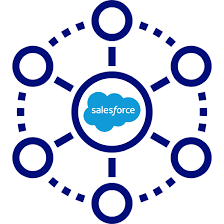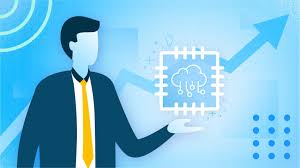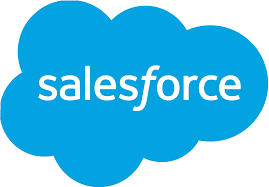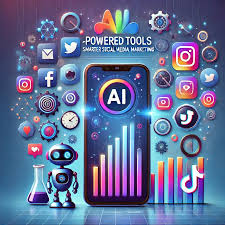From Chatbots to Agentic AI
The transition from LLM-powered chatbots to agentic systems, or agentic AI, can be summed up by the old saying: “Less talk, more action.” Keeping up with advancements in AI can be overwhelming, especially when managing an existing business. The speed and complexity of innovation can make it feel like the first day of school all over again. This insight offers a comprehensive look at AI agents, their components, and key characteristics. The introductory section breaks down the elements that form the term “AI agent,” providing a clear definition. After establishing this foundation, we explore the evolution of LLM applications, particularly the shift from traditional chatbots to agentic systems. The goal is to understand why AI agents are becoming increasingly vital in AI development and how they differ from LLM-powered chatbots. By the end of this guide, you will have a deeper understanding of AI agents, their potential applications, and their impact on organizational workflows. For those of you with a technical background who prefer to get hands-on, click here for the best repository for AI developers and builders. What is an AI Agent? Components of AI Agents To understand the term “AI agent,” we need to examine its two main components. First, let’s consider artificial intelligence, or AI. Artificial Intelligence (AI) refers to non-biological intelligence that mimics human cognition to perform tasks traditionally requiring human intellect. Through machine learning and deep learning techniques, algorithms—especially neural networks—learn patterns from data. AI systems are used for tasks such as detection, classification, and prediction, with content generation becoming a prominent domain due to transformer-based models. These systems can match or exceed human performance in specific scenarios. The second component is “agent,” a term commonly used in both technology and human contexts. In computer science, an agent refers to a software entity with environmental awareness, able to perceive and act within its surroundings. A computational agent typically has the ability to: In human contexts, an agent is someone who acts on behalf of another person or organization, making decisions, gathering information, and facilitating interactions. They often play intermediary roles in transactions and decision-making. To define an AI agent, we combine these two perspectives: it is a computational entity with environmental awareness, capable of perceiving inputs, acting with tools, and processing information using foundation models backed by both long-term and short-term memory. Key Components and Characteristics of AI Agents From LLMs to AI Agents Now, let’s take a step back and understand how we arrived at the concept of AI agents, particularly by looking at how LLM applications have evolved. The shift from traditional chatbots to LLM-powered applications has been rapid and transformative. Form Factor Evolution of LLM Applications Traditional Chatbots to LLM-Powered Chatbots Traditional chatbots, which existed before generative AI, were simpler and relied on heuristic responses: “If this, then that.” They followed predefined rules and decision trees to generate responses. These systems had limited interactivity, with the fallback option of “Speak to a human” for complex scenarios. LLM-Powered Chatbots The release of OpenAI’s ChatGPT on November 30, 2022, marked the introduction of LLM-powered chatbots, fundamentally changing the game. These chatbots, like ChatGPT, were built on GPT-3.5, a large language model trained on massive datasets. Unlike traditional chatbots, LLM-powered systems can generate human-like responses, offering a much more flexible and intelligent interaction. However, challenges remained. LLM-powered chatbots struggled with personalization and consistency, often generating plausible but incorrect information—a phenomenon known as “hallucination.” This led to efforts in grounding LLM responses through techniques like retrieval-augmented generation (RAG). RAG Chatbots RAG is a method that combines data retrieval with LLM generation, allowing systems to access real-time or proprietary data, improving accuracy and relevance. This hybrid approach addresses the hallucination problem, ensuring more reliable outputs. LLM-Powered Chatbots to AI Agents As LLMs expanded, their abilities grew more sophisticated, incorporating advanced reasoning, multi-step planning, and the use of external tools (function calling). Tool use refers to an LLM’s ability to invoke specific functions, enabling it to perform more complex tasks. Tool-Augmented LLMs and AI Agents As LLMs became tool-augmented, the emergence of AI agents followed. These agents integrate reasoning, planning, and tool use into an autonomous, goal-driven system that can operate iteratively within a dynamic environment. Unlike traditional chatbot interfaces, AI agents leverage a broader set of tools to interact with various systems and accomplish tasks. Agentic Systems Agentic systems—computational architectures that include AI agents—embody these advanced capabilities. They can autonomously interact with systems, make decisions, and adapt to feedback, forming the foundation for more complex AI applications. Components of an AI Agent AI agents consist of several key components: Characteristics of AI Agents AI agents are defined by the following traits: Conclusion AI agents represent a significant leap from traditional chatbots, offering greater autonomy, complexity, and interactivity. However, the term “AI agent” remains fluid, with no universal industry standard. Instead, it exists on a continuum, with varying degrees of autonomy, adaptability, and proactive behavior defining agentic systems. Value and Impact of AI Agents The key benefits of AI agents lie in their ability to automate manual processes, reduce decision-making burdens, and enhance workflows in enterprise environments. By “agentifying” repetitive tasks, AI agents offer substantial productivity gains and the potential to transform how businesses operate. As AI agents evolve, their applications will only expand, driving new efficiencies and enabling organizations to leverage AI in increasingly sophisticated ways. Like Related Posts Salesforce OEM AppExchange Expanding its reach beyond CRM, Salesforce.com has launched a new service called AppExchange OEM Edition, aimed at non-CRM service providers. Read more The Salesforce Story In Marc Benioff’s own words How did salesforce.com grow from a start up in a rented apartment into the world’s Read more Salesforce Jigsaw Salesforce.com, a prominent figure in cloud computing, has finalized a deal to acquire Jigsaw, a wiki-style business contact database, for Read more Service Cloud with AI-Driven Intelligence Salesforce Enhances Service Cloud with AI-Driven Intelligence Engine Data science and analytics are rapidly becoming standard features in enterprise applications, Read more



















